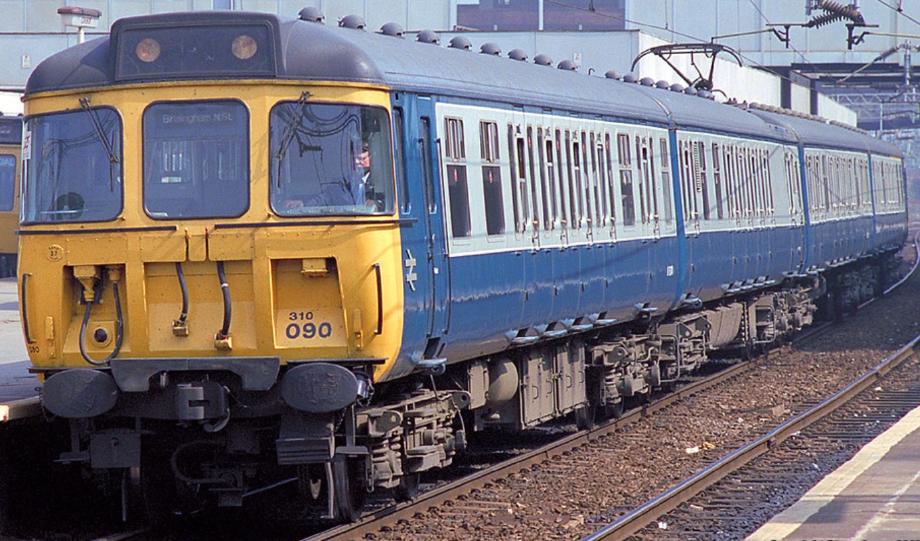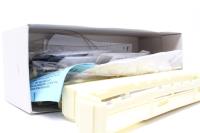Class 310 Profile and Models

310090 at Coventry in April 1987. ©Steve Jones
|
The British Rail Class 310 was a slam-door, alternating current (AC) electric multiple unit (EMU) introduced in 1965 as part of the West Coast Main Line electrification project. They were initially classified as Class AM10 units before the introduction of the TOPS classification system. Constructed at BR's Derby Carriage and Wagon Works. They consisted of four carriages - a second class driving trailer, a second class trailer, a second class motor car (with guard's/luggage compartment above which the Stone Faiveley AMBR pantograph was mounted) and a composite (1st and 2nd class) driving trailer. The maximum speed was 75 miles per hour. A glass partition behind the driver's cab enabled passengers in the leading and rear coaches to view the line ahead or behind. Initially they were primarily used on local services from London Euston to Bletchley, Milton Keynes, Northampton and Birmingham New Street, and within the West Midlands. Most Class 310 units that survived into the 21st century were withdrawn between 2001 and 2002. |
|
|
Type of Unit |
Electric Multiple Unit |
|
Builder |
Derby RCW |
|
Build Dates |
1965 to 1967 |
|
Total Built |
50 sets |
|
Coaches Per Unit |
3 or 4 car |
|
Capacity |
318 seats |
|
Power Output |
1,080hp |
|
Top Speed |
75 mph |
|
Operated By |
British Rail c2c Central Trains |
|
Main Duties |
Regional Passenger |
|
In Service Until |
2002 |
|
Surviving Examples |
0 |
Products awaiting categorisation
| Scale | Brand | Image | Construction Type | DCC Capability | Product Code | Product Title | Livery |
|---|---|---|---|---|---|---|---|
| OO Gauge (1:76 Scale) | Southern Pride |

|
RTR/RTUse/Pre-assembled | Not set |
SP-EM500 View |
Class 310 (original) EMU kit - resin bodies and brass sides for DTC, DTS, MBS and TS vehicles | Awaiting Categorisation |